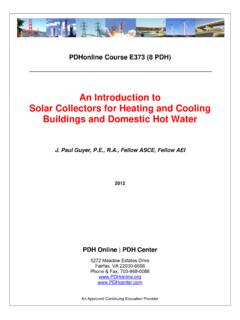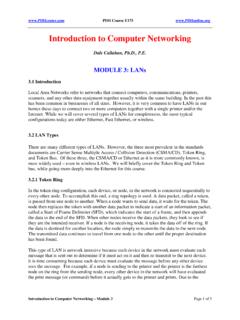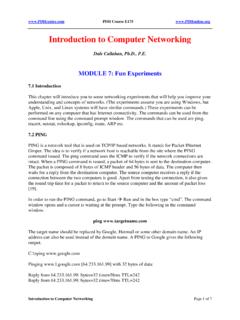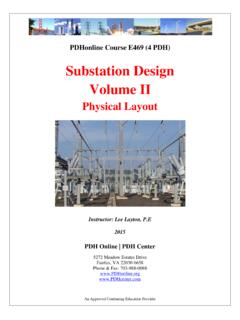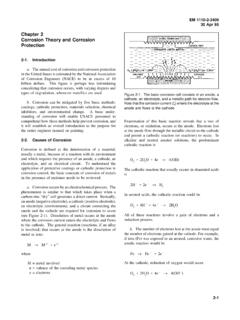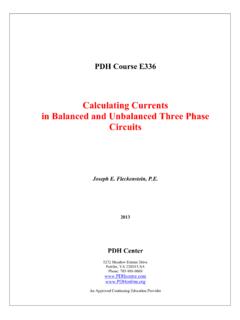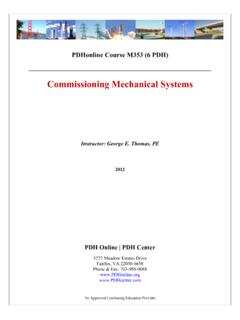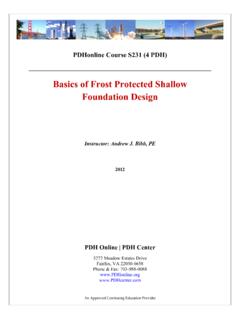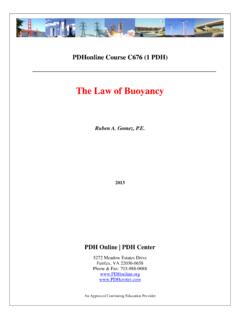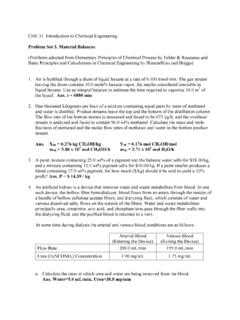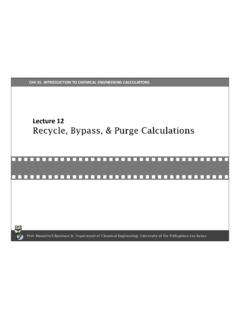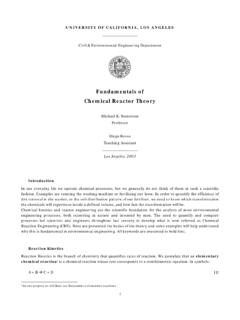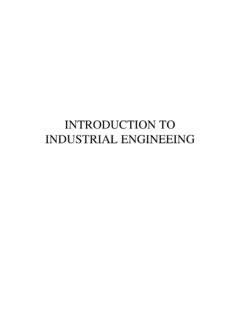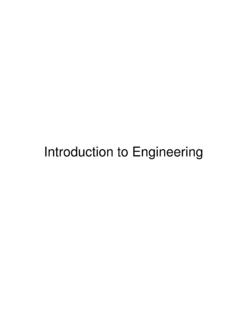Transcription of Introduction to Subsea Engineering for Electrical Engineers
1 An Approved Continuing Education Provider PDHonline Course E443 (4 PDH) Introduction to Subsea Engineering for Electrical Engineers Anthony K. Ho, 2017 PDH Online | PDH Center 5272 Meadow Estates Drive Fairfax, VA 22030-6658 Phone & Fax: 703-988-0088 PDHonline Course E443 Table of Content 1. Introduction .. 2 2. Subsea Production Systems .. 4 3. Multiplexed Electro-Hydraulic Control System .. 7 4. Subsea Control Module (SCM) .. 9 5. Electric Submersible Pump (ESP) .. 11 6. Subsea Electrical Connectors .. 15 7. Electrical Flying Leads (EFL) .. 17 Construction .. 18 Installation .. 19 8. Subsea Electrical Power Distribution.
2 21 9. Subsea Distribution Unit (SDU) .. 24 10. Subsea Power Supply .. 26 11. Subsea Power Grid .. 27 12. Electrical Power System .. 30 Design Codes, Standards, and Specifications .. 30 Electrical Load Calculation .. 31 13. Master Control Station (MCS) .. 34 14. Topside Umbilical Termination Assembly (TUTA) .. 35 15. Electrical Power Unit (EPU) .. 37 16. Subsea Power and Communication Unit (SPCU) .. 40 17. Uninterruptible Power Supply (UPS) .. 41 Topside UPS .. 41 Subsea UPS .. 42 18. All Electric Subsea Control System .. 44 PDHonline Course E443 List of Figures Figure 1: Typical Subsea Oil Field .. 2 Figure 2: Topology for a Typical Oil and Gas Production System.
3 4 Figure 3: Typical Subsea Tree P&ID .. 5 Figure 4: Typical Manifold and Flowline P&ID .. 6 Figure 5: Multiplexed Electro-Hydraulic Umbilical (Cross Section) .. 7 Figure 6: Multiplexed Electro-Hydraulic Control System .. 8 Figure 7: Subsea Control Module .. 9 Figure 8: Subsea Electronics Module .. 10 Figure 9: Typical Downhole ESP configuration .. 12 Figure 10: Pump Performance Curve .. 13 Figure 11: Subsea Electrical Connectors .. 16 Figure 12: Electrical Flying Leads (Jumpers) .. 17 Figure 13: Leads are flown into place using ROV .. 18 Figure 14: Simulation of ROV Performing Tooling Intervention .. 20 Figure 15: Electrical and Hydraulic Distributions in Subsea Production System .. 22 Figure 16: Subsea Distribution Unit (SDU).
4 24 Figure 17: Power Supply from Onshore to Subsea .. 26 Figure 18: Subsea Power Grid .. 27 Figure 19: Typical Subsea Power Grid Configuration .. 28 Figure 20: Subsea Switchgear .. 29 Figure 21: Electrical Power System Design Process .. 30 Figure 22: Master Control Station .. 34 Figure 23: Topside Umbilical Termination Assembly (TUTA) .. 35 Figure 24: Electrical Power Unit .. 37 Figure 25: EPU Electrical Schematic .. 38 Figure 26: EPU Display on the 39 Figure 27: Topside UPS .. 41 Figure 28: Power Supply from UPS .. 41 Figure 29: Subsea UPS .. 43 PDHonline Course E443 List of Tables Table 1: Advantages and Disadvantages of Multiplexed Electro-Hydraulic Control System.
5 7 Table 2: American Petroleum Institute (API) .. 31 Table 3: International Electrotechnical Commission (IEC) .. 31 Table 4: Institute of Electrical and Electronics Engineers (IEEE) .. 31 Table 5: International Standards Organization (ISO) .. 31 Table 6: Typical Electrical Load Categories .. 32 Table 7: Load Schedule for Electro-Hydraulic Production System .. 33 PDHonline Course E443 2014 Anthony K. Ho Page 1 of 45 Acronyms API American Petroleum Institute DHPTT Downhole Pressure and Temperature Transmitters EDM Electrical Distribution Manifold/Module EFL Electrical Flying Leads EPU Electrical Power Unit ESP Electric Submersible Pump FPSO Floating Production Storage and Offloading HPU Hydraulic Power Unit IEC International Electrotechnical Commission IEEE Institute of Electrical and Electronics Engineers ISO International Standards Organization MCS Master Control Station MQC Multiple Quick-Connect P&ID Piping and Instrumentation Diagram PIG Pipeline
6 Inspection Gauge ROV Remotely Operated Underwater Vehicle SAS Safety Automation System SCM Subsea Control Module SDU Subsea Distribution Unit SEM Subsea Electronics Module SIT System Integration Test SUTA Subsea Umbilical Termination Assembly TUTA Topside Umbilical Termination Assembly ULM Umbilical Line Module UPS Uninterruptible Power Supply PDHonline Course E443 2014 Anthony K. Ho Page 2 of 45 1. Introduction Subsea Engineering encompasses multiple fields of professionals, including chemical , control system, petroleum, mechanical, Electrical , and reservoir Engineers in addition to technologists and geo-technicians.
7 The Subsea industry has become more significant in recent decades due to the rising demand for oil and gas and the advance of Subsea technology. According to a study by , Subsea Engineering jobs were the fourth highest paid within the oil and gas industry. Subsea Engineering is one of the most important, yet most technically difficult, aspects of the offshore petroleum industry. Oil and gas fields reside beneath many inland waters and offshore areas around the world. In the oil and gas industry, the term Subsea refers to the exploration, drilling, and development of oil and gas fields in underwater locations. Underwater oil facilities are generically referred to using a Subsea prefix, such as Subsea well, Subsea field, Subsea project, and Subsea development.
8 Subsea oil field developments are usually split into shallow-water and deepwater categories to distinguish between the different facilities and approaches that are needed for each location. Figure 1 shows a typical Subsea oil field. Figure 1: Typical Subsea Oil Field Subsea completions can be traced back to 1943 with the Lake Erie completion at a water depth of thirty-five feet. The land-type Christmas tree well required diver interventions for installation, maintenance, and flow-line connections. Current technology allows for Subsea development at a water depth of 10,000 feet. The first known Subsea ultra-high-pressure waterjet system was developed in PDHonline Course E443 2014 Anthony K.
9 Ho Page 3 of 45 2010 by Jet Edge and Chukar Waterjet. It was capable of operating below 5,000 feet and was used to blast away hydrates that were clogging a containment system at the Deepwater Horizon. Currently, there are almost 800 offshore rigs (jack-up rigs and semi-submersible platforms) around the world. There are over 100 rigs off the southern coast of the United States in the Gulf of Mexico. The world s deepest oil platform is the Perdido, a spar platform located in the Gulf of Mexico in a water depth of 8,000 feet. Offshore production regions represent nearly 650 billion barrels of oil, or 20% of known remaining global oil reserves.
10 The offshore industry produces about twenty-five million barrels per day, or 30% of global production. To keep up with the increasing public need for oil and natural gas, more Subsea fields will be opened up for exploration, drilling, and production. Subsea technology in offshore oil and gas production is a highly specialized field with particular demands on Engineering and simulation. Most of the new oil fields are located in deep water, a term often used to describe offshore projects located in water depths greater than around 600 feet. These deepwater oil fields, which are generally referred to as deepwater systems, frequently use floating drilling vessels and oil platforms and require remotely operated underwater vehicles (ROVs) because manned diving is impractical.
